Peter Ireland – 18 May, 2015
The exhibition's somewhat clunky title nonetheless points to a central concern in Campbell's work. Human beings, of course, get to write the script, and as far back at the Book of Genesis they were assuming the right to name the animals, imperiously disregarding the fact we're animals too. As a kind of rebuke to any sense of human superiority, Campbell's work has been dedicated to identifying the animal in us, monkeying around with our cultural pretensions, but with a humorous affection shaping his ironies, saving them from the bitter edge of mere sarcasm.
Gisborne
Brian Campbell
Hoof versus Hand
Curated by Damian Skinner
17 April - 28 June 2015
As with the Robert Frost poem about a wall, any concept of a canon these days can be just as interesting for what it excludes as what it may include. Modernism’s often rather Stalinist formation of a canon - like Harold Bloom’s literary version - has ceased to have the credibility it claimed, and any attempts at construction and enforcement now tend to get laughed off, or - even more fun - themselves becoming subject to critical scrutiny. Whatever happens, an excess of solemnity’s not going to be part of the equation.
In 1987 when Colin McCahon died, the prevailing opinion was - at least among the cognoscenti - that he was New Zealand’s greatest painter. Good canonical stuff. In the past few years, though, there’s a growing sense that, perhaps, Gordon Walters might now be graduating to this exalted position. That’s if “the greatest” still retains much clout beyond the operations of all sorts of salesmen. For anyone much under forty, McCahon’s sometimes earnest concerns are not their concerns, and for these younger generations there’s a perceptible lack of interest in - let alone admiration for - this formerly revered artist’s work. Conversely, an interest in Walters’ work seems to be gaining pace, the imagery having an international sophistication more of the moment than McCahon’s often tortured provincialism. Compare the complex koru works with those clunky Caltex paintings and you’ll get the general idea.
Canon construction is far from being an innocent exercise in assessing quality and achievement. Not only taste and fashion, but artistic and academic reputations weight the scales, just as do auction-house promotion and the question of collector investment. On site there are more pitches being protected than at a World Cup. As with so much in the art world, there are claims of solidity and reliability resting on nothing more than an impression of credibility, a Saragasso Sea of faith, hope and little charity going round and round and round.
In the heroic decade between 1965 and 1975 when abstract art became more generally accepted and the dealer gallery system got going here, a larger number of emerging artists began appearing on the radar, and some of them - such as, say, Michael Eaton, Suzanne Goldberg and Ray Thorburn - then had significant heft. In the following decade the same could be said of, say, Christina Conrad, Rob Taylor and Charo Oquet. None of these names mean much to anyone in the art game now. It can work the other way as well. During the heroic decade, artists such as C F Goldie, Lois White and even Charles Tole seemed consigned to the dustbin of history, but since then more judicious reassessments have deemed otherwise - for a multitude of reasons, including social and cultural, not just artistic considerations.
There’s an assumption, too, that the accepted art centres have the right to call the tune. The fact that they do decree “what’s what” doesn’t confer an actual right, though. Apart from Fiordland, the North Island’s East Coast is as about as far as you can get from what might be considered an art centre. But, in the art world anyway, distance is seldom just geographic. Like most isolated provincial areas, Tairawhiti lacks a high profile in New Zealand’s art history, and artists working there in the 20th century such as Eric Gully and Norman Scott await due wider recognition. Of course, the whaikairo tradition of Rongowhakaata and Ngati Porou is long, rich and highly significant, but even forty years after Te Māori Pakeha art history is still taking a while to catch up. Early East Coast photographer William Crawford is in much the same waka, but until the art market and art historians can widen their focus from something called “art photography” poor Willie will just have to keep paddling.
Christchurch-born but Southland-raised Brian Campbell came to Gisborne in the late 1970s as a young man, heeding the call of the surf. Apart from a few wasted years here and there in Auckland - including 18 months at Elam - he’s stayed on the East Coast since, working out of a very modest bach a stone’s throw from Gisborne’s Wainui Beach. Less ambitious to be noticed than to have a life, he’s avoided the treadmill of maintaining a profile, preferring to do his own thing. And, a master of the art of seeming casual, he’s nonetheless steadily produced over the past 40 years an impressive body of work which has an enthusiastic following among those who know about it. It was only a matter of time before someone would see past the “provincial” setting and have the ability to place the work in a national context.
That person has turned out to be Damian Skinner, Curator of Applied Art and Design (1) at the Auckland Museum, internationally known for his work on contemporary jewelry and ceramics, and who has curated this timely exhibition for the Tairawhiti Museum in Gisborne. Having gone through conventional art historical training, Skinner emerged in the early 2000s as a fairly conventional curator with an exhibition and book surveying painter Don Binney’s production (2) at a time when the artist’s reputation was probably at its nadir. While Skinner’s approach has never been quite “animal rescue” his record is of examining work at the margins of art world interest and bringing it closer to the spotlight.
From the very beginning, though, he’s shown a scholarly interest in customary Maori art, a subject which, despite the often over-hyped achievement of Te Māori, has remained largely in the hands of the ethnologists (3). This interest has extended to contemporary Maori artists whose work derives from the customary, such as John Hovell (4).
More recently he has turned his attention to contemporary jewelry, a subject until now pretty much confined to those whose expertise has been corralled into the category of “craft”. What marks out Skinner’s approach is his emphasis is on the “history” part of the label “art historian”, unlike most of his compatriots who come from the “art” angle. The inhabitants of the land of writing about McCahon and Mrkusich may deem unknown provincial artists such as Campbell beneath their notice, but Skinner’s unlikely to, which is all the more reason to heed his roving and often penetrating eye.
The exhibition’s somewhat clunky title - Hoof versus Hand - nonetheless points to a central concern in Campbell’s work. Human beings, of course, get to write the script, and as far back at the Book of Genesis they were assuming the right to name the animals, imperiously disregarding the fact we’re animals too. As a kind of rebuke to any sense of human superiority, Campbell’s work has been dedicated to identifying the animal in us, monkeying around with our cultural pretensions, but with a humorous affection shaping his ironies, saving them from the bitter edge of mere sarcasm.
In a December 2013 piece on this site (5), Warren Feeney noted the lack of satire in this young country’s art production. However much art practice may have matured over the past couple of decades, showing greater confidence and professionalism, its context within the larger culture remains one of insecurity and sometimes a degree of paranoia verging on hysteria (6). It takes a more secure culture to produce satire worthy of the name and deal civilly with its consequences. But it also takes an art world capable of looking outwards and not just endlessly inwards. Political cartoonists seldom hold up mirrors to themselves.
It’s suddenly become respectable for artists to highlight current social issues (something, incidentally, photography’s documentary tradition has been doing for a century), and Simon Denny’s current fixation on surveillance is perhaps the most high-profile instance. Another was Kalisolaite ‘Uhila’s entry in last year’s Walters Prize, his studied homelessness a grim comment on the dark underbelly of the economic and social “reforms” of the 1980s and ‘90s. As the rich get richer many artists become direct beneficiaries of this change in our circumstances, and so none has any cause to complain. Of course, four decades ago it simply wasn’t fashionable to engage with political matters in the way it is now (7) and there is little record in art production here that anyone had many doubts about the nature of the promised land Roger Douglas was leading us to.
Except Brian Campbell. Even before the economic crash of 1988 - or “downturn” as the apologists would have it - Campbell was lampooning businessmen in suits swinging from tree to tree, a business couple aping the posture of the figures of Evening and Dawn in Michelangelo’s tomb for Giuliano de Medici (except they’re reclining on an expensive limo), and tall mirror glass buildings bending over doing their own downturn. His apparently modest images may lack the savage tone of a Gilray, Rowlandson or Grosz, but his work is firmly in the same tradition. And, at the same time there began to emerge imagery relating to humankind’s treatment of the planet - his abandoned vehicles and leafless trees festooned with old tyres, more melancholy reflection than any treatise on resource exploitation or the causes of climate change.
In the early ‘90s he invented a land called the Corrugated Kingdom, terrain he mapped out in a series of large black and white prints (8) over a number of years. While Jeff Thomson could be credited as creator of this mythical land, Campbell’s take on it is more Goya than Dufy, more Gothic than Deco, its geology more a matter of unstable tectonic plates than smooth sedimentary layers (9). Campbell’s Kingdom is a harsh land - the light, its constituents - largely unpeopled, a graveyard of notions of romantic love and ideas of progress. Maybe not a good place to bring up kids, but in fact where most of them end up living.
In terms of his series, this work crossed over in the mid ‘90s to larger paintings someone has called “spaghetti” landscapes: the high viewpoint is the same, the staffage similar - horses, car wrecks, fountains, empty houses, wooden deer, boats full of water, tents, water tanks and a solitary cypress - but the paint technique of pasta-like squiggles dismisses perspective and renders the surface a 2D puzzle taking resolved scrutiny to solve. These dense conundrums constitute one of the achievements of Campbell’s oeuvre.
The irrepressible cartoonist in him, though, prevents any of his work becoming too solemn. In fact in the 1980s and ‘90s a national surfing magazine ran a strip by him chronicling the adventures of surfer Larry the Fish, half man half scaled being who shamelessly but cheerfully exhibited the worst aspects of surfing culture while remaining “a nice guy”, as well as being a perceptive commentator on local surfing identities. As in the rest of his work Campbell plumbed the depths of social convention to uncover the way things really operate, leaving heads nodding in agreement but no one alienated.
There are few human foibles missed by Campbell’s sharp but tolerant eye. His technical skills may cover a wide range - he’s a skilled draughtsman, an unfussy print-maker, an adventurous colourist and a confident painter with an unerring mark - but his satiric skills are his forte. Human beings are gullible animals and it’s the satirist’s role to show just how paper-thin their hopes are, how unreliable their ideals may be at every level of human endeavour. Campbell’s work may echo the writer of Eccelesiastes in his lament that all is vanity, but this East Coast artist makes it all seem, anyway, somehow worthwhile.
Peter Ireland
(1) This title indicates a widespread institutional difficulty “placing” someone with Skinner’s diverse, inter-disciplinary and cross-cultural skills. Happily, the Auckland Museum seems flexible enough to let it work.
(2) Don Binney: nga manu/nga motu - birds/islands, Auckland University Press, 2003.
(3) Among his ground-breaking titles are The Carver and the Artist: Maori art in the twentieth century, Auckland University Press, 2008.
(4) The Passing World, the Passage of Life: John Hovell and the art of kowhaiwhai, Rim Books, Auckland, 2010.
(5) Warren Feeney, Barry Cleavin Publication, EyeContact, 29 December 2013.
(6) The recent exchange between curator Barton and critic Hurrell over the Auckland Art Gallery’s Billy Apple retrospective being a pertinent example.
(7) An honourable exception (among non-photographers) has been artist Lauren Lysaght.
(8) See Warwick Brown, Another 100 New Zealand Artists, Godwit Publishing Ltd, Auckland, 1996, no.9.
(9) For a while in the mid ‘90s Campbell used the “signature” of a flying chook, but it came trussed up, ready for the baking dish; a fine image of the collision of nature and culture, or even of nature and nurture. Ouch!
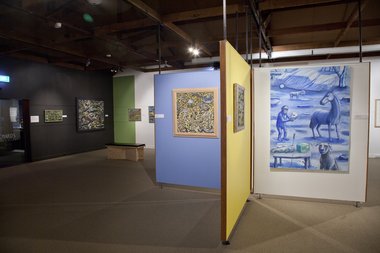
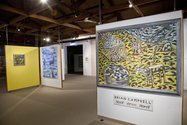
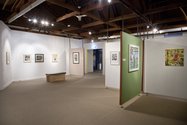

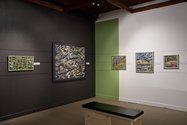
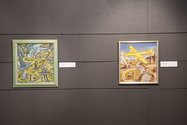
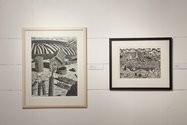
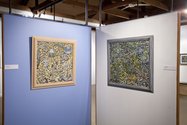

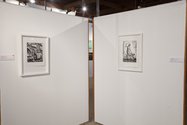
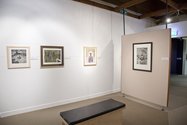
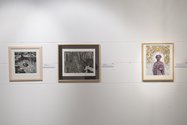
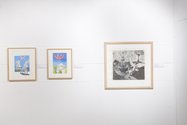
 Advertising in this column
Advertising in this column Two Rooms presents a program of residencies and projects
Two Rooms presents a program of residencies and projects



This Discussion has 0 comments.
Comment
Participate
Register to Participate.
Sign in
Sign in to an existing account.